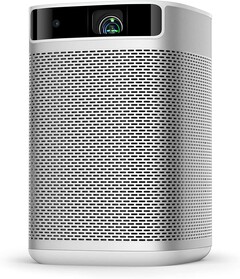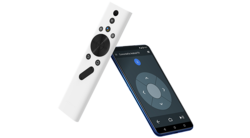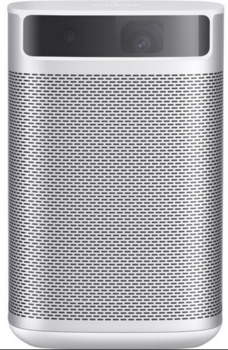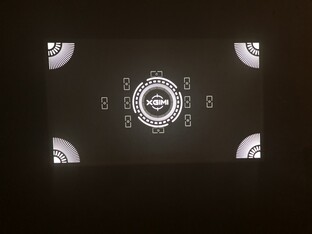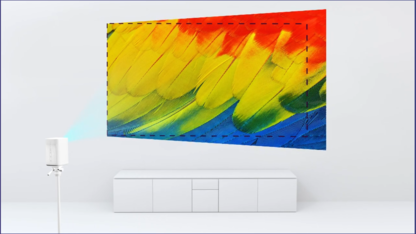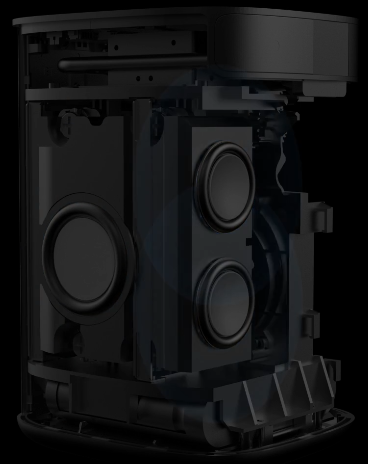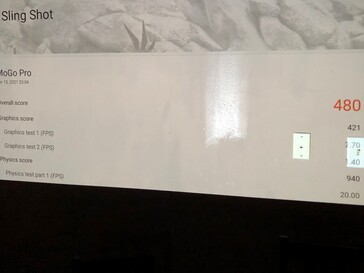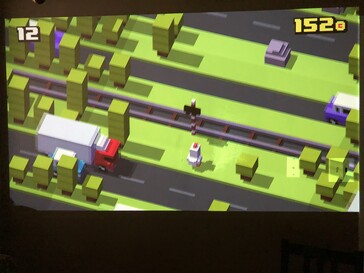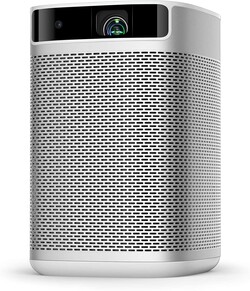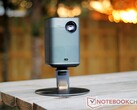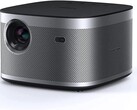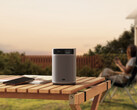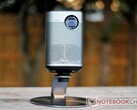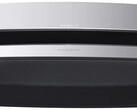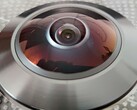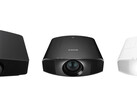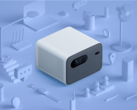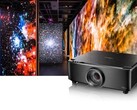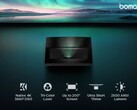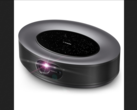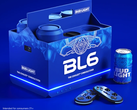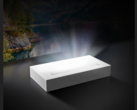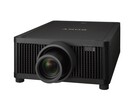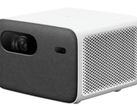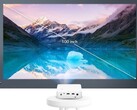Introduction
Many home theaters use projectors to generate a massive image through a comparatively compact device. Though small relative to the picture they produce, standard projectors are still anchored to a single spot. Because they lack portability, setting up a projection system in a new location (say, outdoors or at a friend's house) is cumbersome and often prohibitive.
Portable projectors have grown in popularity over the past few years because of this. Instead of hauling all the equipment and cables needed to set up a temporary theater, a portable projector packs all the necessary hardware into a single easy-to-carry package.
The XGIMI MoGo Pro is one such portable projector. Inside its lilliputian case sits every needed for a fun movie-watching experience, as well as a few smart features that make the process intuitive and fluid. I've used the XGIMI MoGo Pro for a little over a month. My family and I have enjoyed many movies, shows, and some games during that time. Here are my thoughts.
Design
The MoGo Pro is tiny considering the tech inside. The projector measures 146 x 105.5 x 94.5 mm (5.75 x 4.15 x 3.72 in) and 900 g (1.98 lbs), making it easy to throw in a small bag or purse. Construction is solid, thanks mainly to the aluminum speaker grill that wraps around the front and both sides. The back, top, and bottom are covered with a fingerprint-resistant white plastic. The main projector and camera (more on that below) are covered with simple clear acrylic which smudges but easily wipes clean.
Ports and inputs on the projector are simple. The back holds a 3.5 mm audio jack, an HDMI input, a USB-A 2.0 port, and a DC input. The top features a power LED indicator and three touch buttons: volume down, play/pause, and volume up. There is also a threaded hole in the middle of the bottom for mounting the MoGo Pro on a tripod, which is a nice touch.
The remote holds the inputs necessary for navigating the projector's Android TV interface. The pyramidal remote holds a power button, a menu button, a button for the Google Voice Assistant, a projector adjust button, a settings button, and the standard remote buttons for Android TV (back, home, volume up, volume down, and a directional disc with a select button in the middle). There is also a slider on the back that sets the volume buttons to adjust either volume or the projector's focus.
The remote is light enough that it's easy to use but feels well-built. The buttons are very clicky and offer firm feedback.
Overall, the aesthetics are nice and the build quality is excellent. I wish XGIMI sold the MoGo Pro with a stealthier black paint job, but that is a privilege reserved for the MoGo Pro+.
Projector Features and Quality
The main selling point (aside from its portability) of the MoGo Pro is its excellent auto-focus and keystone correction. Once the MoGo Pro boots up, it will automatically focus its projection thanks to a small camera next to the main projector. This process takes about 3-5 seconds and results in a razor-sharp image. The MoGo Pro can also detect if it's moved and may re-focus automatically as a result, which is convenient. Users can click a button on the remote to activate the auto-focus manually.
The projector's keystone correction is also automatic, quick, and results in a near-perfect picture. Keystone correction allows a projector to display a flat image on a surface even when it isn't directly in front of the surface (i.e., at an angle). This also allows the projector to correct any warping or image skewing that results from projecting at an angle. The MoGo Pro's keystone correction works up to 40 degrees horizontally and vertically, so you can plop the projector out of the way without making the image suffer.
The MoGo Pro uses a DLP projector rated at 300 ANSI Lumens with a 1920x1080 native resolution. (The MoGo Pro can receive 4K input but will downscale it to 1080p.) Video is fairly sharp, depending on the size of the projection (1.2:1 ratio, up to 100 inches at 2.7 meters / 8.7 feet). Pixels are visible on a 100-inch projection from about 1.8 m (6 ft) away. Sitting next to the projector, the picture looks slightly blurry but pixels fade into the overall image. However, at smaller sizes (~70 inches and smaller), the picture is very crisp from a normal viewing distance.
The biggest downside is the projector's brightness. At 300 ANSI lumens, it's relatively dim, especially compared to standalone projectors (and some other portable options). As long as lights are turned down and it's relatively dark in the environment, the picture looks vibrant. However, any background light (e.g., light bleed from an adjacent room) affects the overall image quality. Contrast is also limited. I couldn't measure the exact contrast ratio, but blacks come across as dark gray.
The lamp is rated at 30,000 hours of life. It's not replaceable, but to put that into perspective, you could leave the MoGo Pro on indefinitely for up to 1,250 days, or 3.4 years. If you use the MoGo Pro for four hours a day every day, the lamp would last for roughly 20.5 years.
Audio
The MoGo Pro uses two Harman-Kardon speaker units. Audio quality is fairly good for a portable speaker. Highs and mids are clear and well-balanced. Bass is present but low and tinny, giving the sound an overall thin body. It's a definite step above laptop speakers, but it falls behind premium Bluetooth portable speakers from the likes of Bose and Sony.
The MoGo Pro can also serve as an external speaker via the 3.5 mm audio jack or Bluetooth 4.2/5.0.
Other Features and Performance
The MoGo Pro can be used as an external projector (via either HDMI or the built-in Chromecast) and an external speaker (via the 3.5 mm jack or Bluetooth), but it works best as a standalone device. It runs Android TV 9.0 and is compatible with thousands of media-centered apps and games. However, expectations should be tempered.
The MoGo Pro sports an Amlogic T950X2 CPU with a Mali-G31 GPU, 2 GB of RAM, and 16 GB of internal storage. As such, it's not a powerhouse. It can handle media streaming fairly well, but I noticed some stutters as it buffered video (particularly in YouTube and Disney+) over WiFi (802.11 a/b/g/n, dual-band). Once it buffered, playback smoothed out. The projector handled local playback off a USB 2.0 drive without issue.
Gaming is a different issue. The GPU can only handle lighter titles like Crossy Road and similar games. I was able to play through a few levels of Asphalt 8, but only on the lowest settings and with considerable frame skipping. I tested out a few emulators as well and found good luck with 2D consoles (NES, Genesis/Mega Drive, SNES). PlayStation 1 emulation (via RetroArch) was jittery at best and flat-out didn't work at worst.
Shortcomings
The MoGo Pro is very good for what it is (a portable projector with smart features), but it has some major flaws. Most noticeable is its lack of support for some codecs and certifications. This isn't a dealbreaker with one major exception: Netflix isn't natively available. There is a way to get Netflix up and running, but it involves using a third-party app through the Google Play Store (XTV Manager), which may be too much of a hassle for some.
The 36 Wh (10400 mAh) battery is a very nice addition, but it dies after about 2.5-3 hours (depending on brightness). This is just long enough to finish most movies, but longer flicks (looking at you, Lord of the Rings) and binge sessions demand the 65 W power adapter. This limitation hampers the portability of the projector.
Conclusion
There's a lot I like about the XGIMI MoGo Pro. For a portable projector, it's feature-packed and overall an excellent device. The image quality is great, and the inclusion of Android TV and all of its compatible apps make the projector a one-stop-shop for media consumption.
At US$549 MSRP, there are flaws that need to be addressed. Perhaps the biggest issue is the lamp's relatively low brightness. It works well in dark rooms, but if there is any light pollution (lights on in other rooms, outdoor lamps, etc.), picture quality degrades. A brighter lamp would work wonders on the MoGo Pro's overall image quality, but I also understand that would shorten the lamp's life and possibly increase the cost.
Secondly, the lack of native Netflix support may be a dealbreaker for some, and its lackluster performance will lock out more demanding Android games. The speakers are in "good enough" territory but lack the punch needed for a great movie experience.
Overall, the XGIMI MoGo Pro is a fun device that greatly expands the world of media streaming. It's best suited to family movie nights in the backyard, small apartments where large TV sets won't fit, or as a travel companion to media junkies that travel frequently. It's a fun device that does its job (portable media projection) fairly well. However, at US$549, the XGIMI MoGo Pro is decidedly a novelty luxury purchase.
The XGIMI MoGo Pro is available from XGIMI for US$549.00 MSRP. It is also available at Amazon.
Disclaimer: The author of this review received the XGIMI MoGo Pro portable projector free of charge for the purpose of testing.




